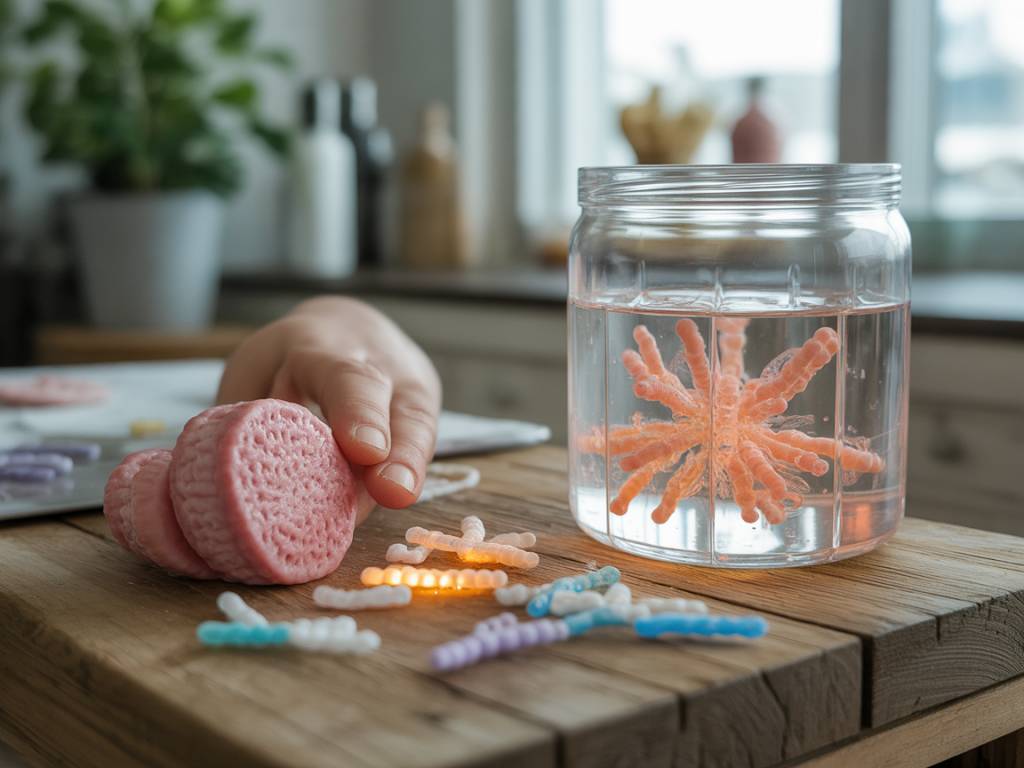Understanding Microplastics and Their Ubiquity
Microplastics, defined as plastic particles less than 5 millimeters in diameter, are found everywhere — from ocean waters to the human bloodstream. These minute particles originate from the degradation of larger plastic wastes or are manufactured intentionally for use in cosmetics, cleaning products, and industrial processes. With the exponential increase in plastic production, microplastics have become a significant environmental and public health concern.
Recent studies have detected microplastics in drinking water, seafood, salt, and even air, making human exposure virtually unavoidable. As scientific research progresses, a growing body of evidence suggests that these microplastics are not biologically inert. Instead, they may interact with biological systems in complex ways, most notably by affecting gut health through alteration of the gut microbiota.
The Gut Microbiota: A Key Player in Human Health
The gut microbiota refers to the trillions of microorganisms — including bacteria, archaea, viruses, and fungi — residing predominantly in the colon. These microorganisms perform essential functions for human health, such as:
- Digesting indigestible dietary fibers
- Synthesizing essential vitamins like B12 and K
- Regulating immune system functions
- Maintaining the integrity of the gut lining
- Preventing colonization by harmful pathogens
A healthy gut microbiome is often characterized by high microbial diversity and balanced bacterial populations. Disruptions to this ecosystem, known as dysbiosis, are associated with a wide range of chronic illnesses, including inflammatory bowel disease (IBD), obesity, diabetes, mental health disorders, and cardiovascular disease.
How Microplastics Enter the Human Gut
Microplastics can infiltrate the digestive system through a variety of pathways. According to environmental health experts, the primary sources of ingestion include:
- Contaminated food sources such as fish, shellfish, and table salt
- Drinking water — both bottled and tap
- Inhalation of airborne particles, which can then be swallowed
- Plastic packaging leaching particles into food during storage or heating
Once ingested, microplastics can interact with the mucosal lining of the digestive tract, potentially triggering immune responses and altering local microbial communities. Ongoing research aims to decipher the long-term effects of such interactions, particularly those involving chronic low-dose exposure.
Disruption of Gut Microbiota by Microplastics
Animal models offer some of the most compelling evidence linking microplastic exposure to gut microbiome disruption. Studies in mice and zebrafish have demonstrated that ingestion of microplastics can lead to:
- Decreased microbial diversity
- Overgrowth of pathogenic bacteria such as Escherichia coli
- Reductions in beneficial bacterial species like Lactobacillus and Bifidobacterium
- Increased gut permeability (leaky gut syndrome)
This microbial imbalance may influence not only digestion but also immune function and metabolic processes. Chronically disrupted gut flora is associated with systemic inflammation, insulin resistance, and even behavioral changes via the gut-brain axis — all conditions that are emerging concerns in the context of microplastic exposure.
Inflammatory Responses and Immune Modulation
Microplastics can act as foreign bodies that provoke inflammatory responses in the intestinal mucosa. These particles may exacerbate existing gastrointestinal conditions or trigger new inflammatory pathways. Scientific reports suggest that microplastics may:
- Enhance oxidative stress in gut epithelial cells
- Stimulate pro-inflammatory cytokine production
- Disrupt epithelial barrier integrity, allowing unwanted substances into the bloodstream
Such immune modulation could have downstream effects beyond the gut. Chronic inflammation is a known contributor to a host of diseases, including cardiovascular conditions, neurodegeneration, and autoimmune disorders. As microplastics accumulate in tissues over time, their inflammatory potential warrants serious consideration.
Endocrine Disruption and Chemical Contaminants
One lesser-known aspect of microplastic toxicity lies in the chemical additives they carry. Many microplastics are carriers of endocrine-disrupting chemicals (EDCs) such as bisphenol A (BPA), phthalates, and flame retardants. These substances can leach from the plastic particles and interfere with hormonal signaling pathways.
EDCs are linked to a variety of health problems, including infertility, thyroid dysfunction, developmental delays, and hormone-sensitive cancers. Their release in the gut environment may further perturb microbial and metabolic balance, amplifying the systemic health risks posed by microplastic ingestion.
Potential Long-Term Health Implications
Though human studies remain limited, the potential implications of long-term microplastic exposure are manifold. If findings from animal models translate to humans, the chronic ingestion of microplastics could contribute to:
- Obesity and metabolic syndrome via altered glucose and lipid metabolism
- Higher rates of allergies and autoimmune diseases due to immune dysregulation
- Neurological conditions through the gut-brain axis and increased neuroinflammation
- Potential links to colorectal cancer through DNA damage and chronic inflammation
These concerns are particularly relevant for vulnerable populations such as infants, pregnant women, and individuals with pre-existing gut disorders, who may be more susceptible to the effects of environmental toxins.
The Need for Further Research and Policy Action
Despite recent advancements in our understanding of microplastic-related gut dysbiosis, critical knowledge gaps persist. Larger, controlled human studies are needed to confirm causal relationships and identify specific microbial pathways affected by different types and sizes of microplastics.
Meanwhile, public health policy must evolve to address rampant plastic pollution. Reducing plastic production, enhancing recycling efforts, and imposing stricter regulations on food contact materials are strategies that can mitigate future human exposure. Consumer awareness campaigns promoting alternatives to single-use plastics and safer food packaging can also play an essential role.
The relationship between microplastics, gut microbiota, and overall health presents an emerging frontier in environmental health research. As our understanding deepens, it becomes increasingly clear that this issue is not just about pollution — it’s about protecting the foundation of human health through a cleaner and safer environment.





